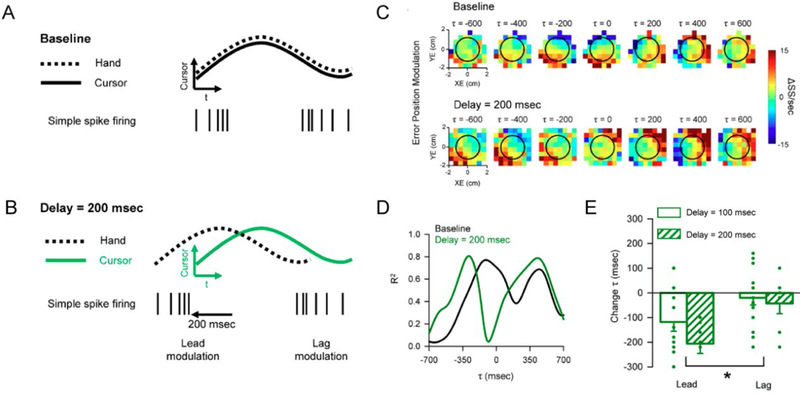Figure 4.

Simple spike representations of position error reflect the components of a forward internal model. A) In the baseline condition the cursor (continuous trace) and hand (dashed trace) movements are indistinguishable. Simple spike firing both leads (left spike train) and lags (right spike train) the cursor movement. B) In the delay condition, hand movement occurs before the cursor movement by the delay imposed. Based on the forward model hypothesis, the lead SS modulation is time-locked to hand movement and will shift earlier relative to cursor movement. The lag modulation should be time-locked to the cursor movement. C) Firing maps for an example Purkinje cell with lead and lag SS position error modulation in both baseline (top row) and 200 msec delay (bottom row) conditions. Each map shows SS modulation at a specific lead (negative τ) or lag (positive τ). Black circle indicates target edge. D) Quantifying the SS encoding of position error for the cell shown in C, R2 temporal profiles determined by linear regression in both the baseline (black line) and 200 msec delay (green line) conditions. E) Average peak timing of encoding across the population illustrates the significant shift in timing of lead encoding for both 100 msec (solid green) and 200 msec (checkered green) delays. The time of lag encoding was not significantly affected for either delay. A-E adapted from (Streng and others 2018).
